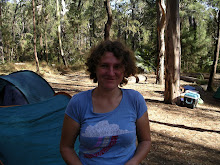There are many software programs out there now that allow you to manipulate your own or other's photography. Features include changing light levels, colour, cropping and resizing, not to mention the cool special effects and technical alterations. These are available on your PC, online and even on gaming consoles like the Wii, making it fun and accessible for all ages.
The slide show I put together on Green Ants was shot in my garden, manipulated and published using Picasa. I tried Picnik first and found the manipulation features easy to use and fun, but I found the time for uploading and linking to Flickr frustrating. Not to mention I have now consumed my broadband limit this month already! This sends me back into the slow world of dial-up and oh how painful it is. So I have concluded that the online services for photo manipulation are great, but if you have limited download or have many users on one network like at a school, it may be less frustrating to use software on the PC first.
How can image manipulation be used in the classroom in an authentic collaborative way with clear outcomes? How authentic is photography? How much information and emotion can you capture in the right shot? Manipulating the images allows student to produce a great shot keeping motivation high and providing the understanding of what a good photo is by creating a new image. In art - media, this is an essential tool for discovering many of the Essential Learnings.
Having started my placement in school last week I have discovered that internet access is not what I presumed. Having planned to use a wiki I developed for class, I discovered the 'internet block'. To access this wiki I have to contact QCAR and have their permission for it to be unblocked. Obviously this blocking system is there to protect the students, but it pays to try out your ideas long before the lesson arrives.
Thanks
Johanna
Subscribe to:
Post Comments (Atom)


No comments:
Post a Comment